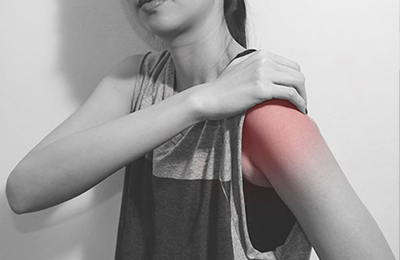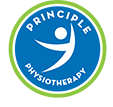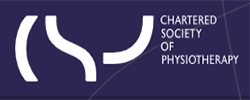
The Role of Physiotherapy in Rehabilitation after Shoulder Arthroscopy
Shoulder arthroscopy is a minimally invasive surgical procedure commonly performed to diagnose and treat various shoulder conditions. While the surgical intervention is essential, the post-operative rehabilitation process plays a crucial role in ensuring optimal recovery and functional restoration. Physiotherapy, a specialized branch of healthcare, plays a vital role in the rehabilitation after shoulder arthroscopy. This article aims to explore the significance of physiotherapy in the recovery process, outlining its key objectives, techniques, and benefits.
The Objectives of Physiotherapy in Rehabilitation:
1. Pain Management:
One of the primary objectives of physiotherapy post-shoulder arthroscopy is effective pain management. Physiotherapists employ various modalities such as ice packs, heat therapy, electrical stimulation, and manual techniques to alleviate pain, reduce inflammation, and promote healing.
2. Restoration of Range of Motion (ROM):
Physiotherapy focuses on gradually restoring the range of motion in the shoulder joint. Therapists employ stretching exercises, passive and active range of motion exercises, and joint mobilizations to improve flexibility and regain normal shoulder movements.
3. Strengthening:
Rebuilding shoulder strength is critical after surgery. Physiotherapists employ progressive strengthening exercises that target the muscles surrounding the shoulder joint, including the rotator cuff muscles. These exercises improve stability, enhance muscular balance, and reduce the risk of recurrent shoulder injuries.
4. Functional Rehabilitation:
Physiotherapy also emphasizes functional rehabilitation, enabling patients to perform their daily activities with ease. Therapists develop customized exercise programs tailored to individual needs, which may include activities such as reaching, lifting, and carrying objects, improving overall functional capacity.
Physiotherapy Techniques:
1. Manual Therapy:
Physiotherapists use hands-on techniques such as joint mobilizations, soft tissue mobilizations, and massage to restore joint mobility, reduce scar tissue formation, and improve circulation in the shoulder area.
2. Therapeutic Exercises:
Specific therapeutic exercises are designed to improve strength, flexibility, and endurance. These exercises progress gradually, ensuring the safe and effective recovery of the shoulder joint. Therapists closely monitor the patient’s progress, modifying the exercises as needed.
3. Electrical Modalities:
Modalities like transcutaneous electrical nerve stimulation (TENS) and ultrasound therapy are commonly employed in physiotherapy. TENS helps manage pain, while ultrasound therapy aids in reducing inflammation and promoting tissue healing.
Benefits of Physiotherapy:
1. Faster Recovery:
A well-structured physiotherapy program accelerates the healing process, allowing patients to regain shoulder function and return to their normal activities at the earliest.
2. Pain Reduction:
Physiotherapy techniques effectively manage post-operative pain, reducing the reliance on medication and facilitating a more comfortable recovery.
3. Improved Functional Outcomes:
Through a combination of range of motion exercises, strengthening, and functional rehabilitation, physiotherapy helps restore the shoulder’s functional abilities, enabling patients to resume their regular daily activities.
4. Preventing Recurrence:
Physiotherapy aids in correcting muscular imbalances, enhancing shoulder stability, and preventing future shoulder injuries or re-injury, promoting long-term shoulder health.
Conclusion:
Physiotherapy plays a pivotal role in the rehabilitation process following shoulder arthroscopy. By focusing on pain management, restoring range of motion, strengthening the shoulder muscles, and facilitating functional rehabilitation, physiotherapy aims to optimize the patient’s recovery and improve their overall shoulder function. The tailored approach and hands-on techniques employed by physiotherapists contribute significantly to faster healing, pain reduction, and enhanced functional outcomes. Therefore, physiotherapy should be considered an integral part of the comprehensive treatment plan for patients undergoing shoulder arthroscopy.
The Objectives of Physiotherapy in Rehabilitation:
1. Pain Management:
One of the primary objectives of physiotherapy post-shoulder arthroscopy is effective pain management. Physiotherapists employ various modalities such as ice packs, heat therapy, electrical stimulation, and manual techniques to alleviate pain, reduce inflammation, and promote healing.
2. Restoration of Range of Motion (ROM):
Physiotherapy focuses on gradually restoring the range of motion in the shoulder joint. Therapists employ stretching exercises, passive and active range of motion exercises, and joint mobilizations to improve flexibility and regain normal shoulder movements.
3. Strengthening:
Rebuilding shoulder strength is critical after surgery. Physiotherapists employ progressive strengthening exercises that target the muscles surrounding the shoulder joint, including the rotator cuff muscles. These exercises improve stability, enhance muscular balance, and reduce the risk of recurrent shoulder injuries.
4. Functional Rehabilitation:
Physiotherapy also emphasizes functional rehabilitation, enabling patients to perform their daily activities with ease. Therapists develop customized exercise programs tailored to individual needs, which may include activities such as reaching, lifting, and carrying objects, improving overall functional capacity.
Physiotherapy Techniques:
1. Manual Therapy:
Physiotherapists use hands-on techniques such as joint mobilizations, soft tissue mobilizations, and massage to restore joint mobility, reduce scar tissue formation, and improve circulation in the shoulder area.
2. Therapeutic Exercises:
Specific therapeutic exercises are designed to improve strength, flexibility, and endurance. These exercises progress gradually, ensuring the safe and effective recovery of the shoulder joint. Therapists closely monitor the patient’s progress, modifying the exercises as needed.
3. Electrical Modalities:
Modalities like transcutaneous electrical nerve stimulation (TENS) and ultrasound therapy are commonly employed in physiotherapy. TENS helps manage pain, while ultrasound therapy aids in reducing inflammation and promoting tissue healing.
Benefits of Physiotherapy:
1. Faster Recovery:
A well-structured physiotherapy program accelerates the healing process, allowing patients to regain shoulder function and return to their normal activities at the earliest.
2. Pain Reduction:
Physiotherapy techniques effectively manage post-operative pain, reducing the reliance on medication and facilitating a more comfortable recovery.
3. Improved Functional Outcomes:
Through a combination of range of motion exercises, strengthening, and functional rehabilitation, physiotherapy helps restore the shoulder’s functional abilities, enabling patients to resume their regular daily activities.
4. Preventing Recurrence:
Physiotherapy aids in correcting muscular imbalances, enhancing shoulder stability, and preventing future shoulder injuries or re-injury, promoting long-term shoulder health.
Conclusion:
Physiotherapy plays a pivotal role in the rehabilitation process following shoulder arthroscopy. By focusing on pain management, restoring range of motion, strengthening the shoulder muscles, and facilitating functional rehabilitation, physiotherapy aims to optimize the patient’s recovery and improve their overall shoulder function. The tailored approach and hands-on techniques employed by physiotherapists contribute significantly to faster healing, pain reduction, and enhanced functional outcomes. Therefore, physiotherapy should be considered an integral part of the comprehensive treatment plan for patients undergoing shoulder arthroscopy.




